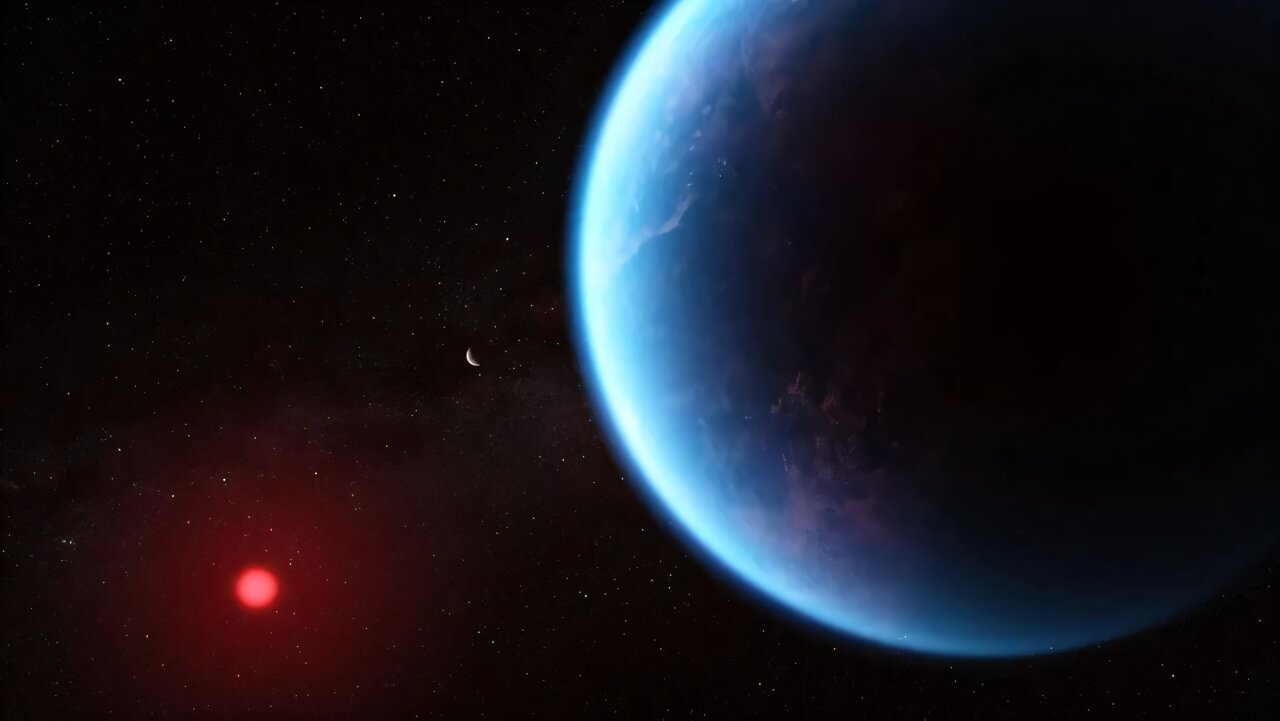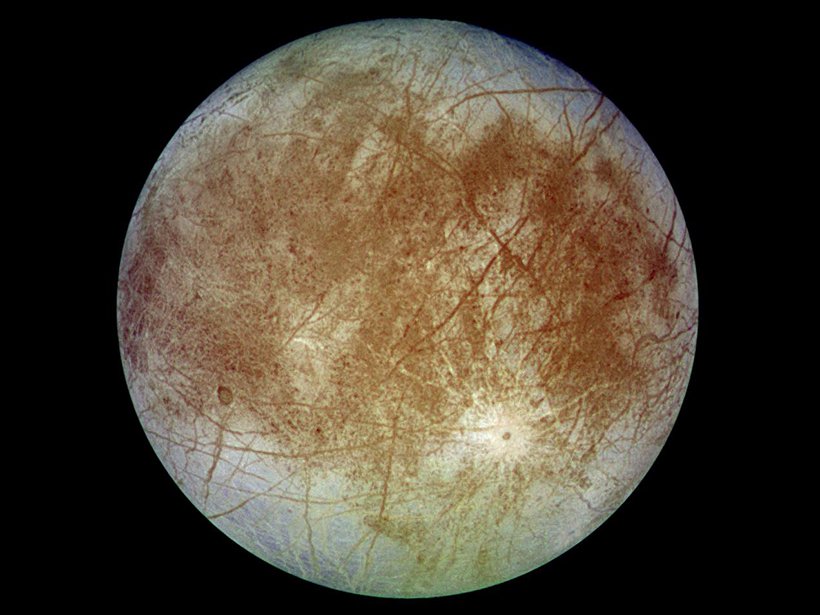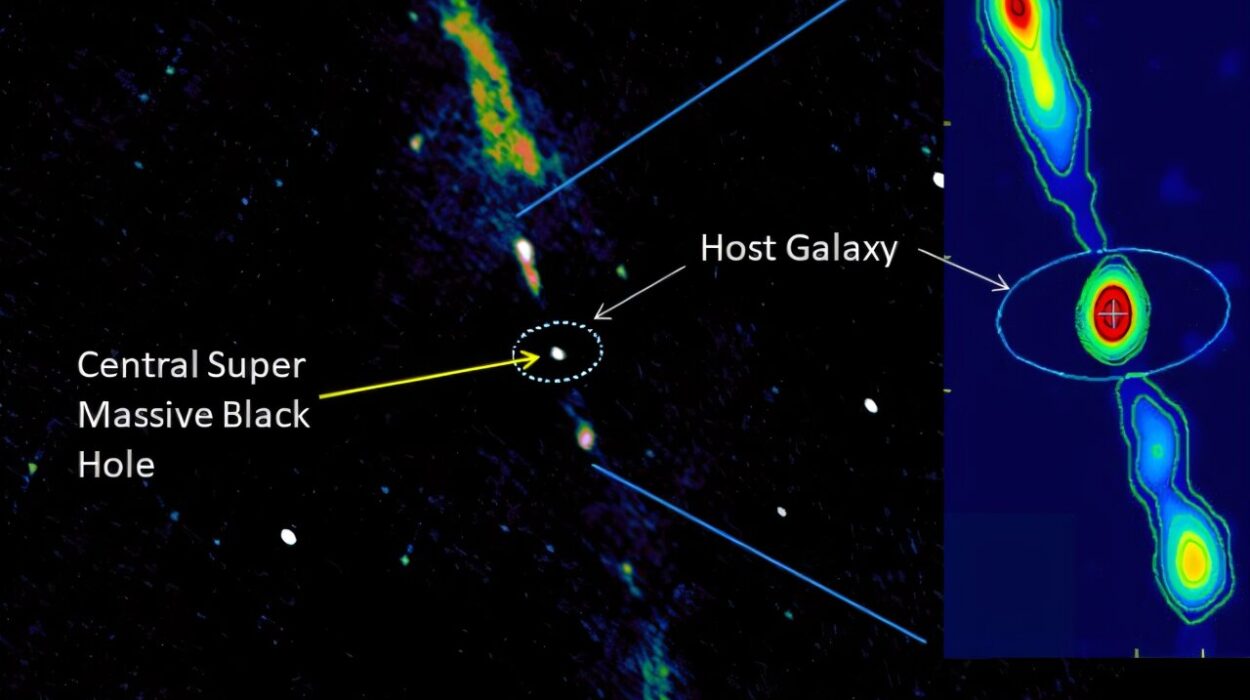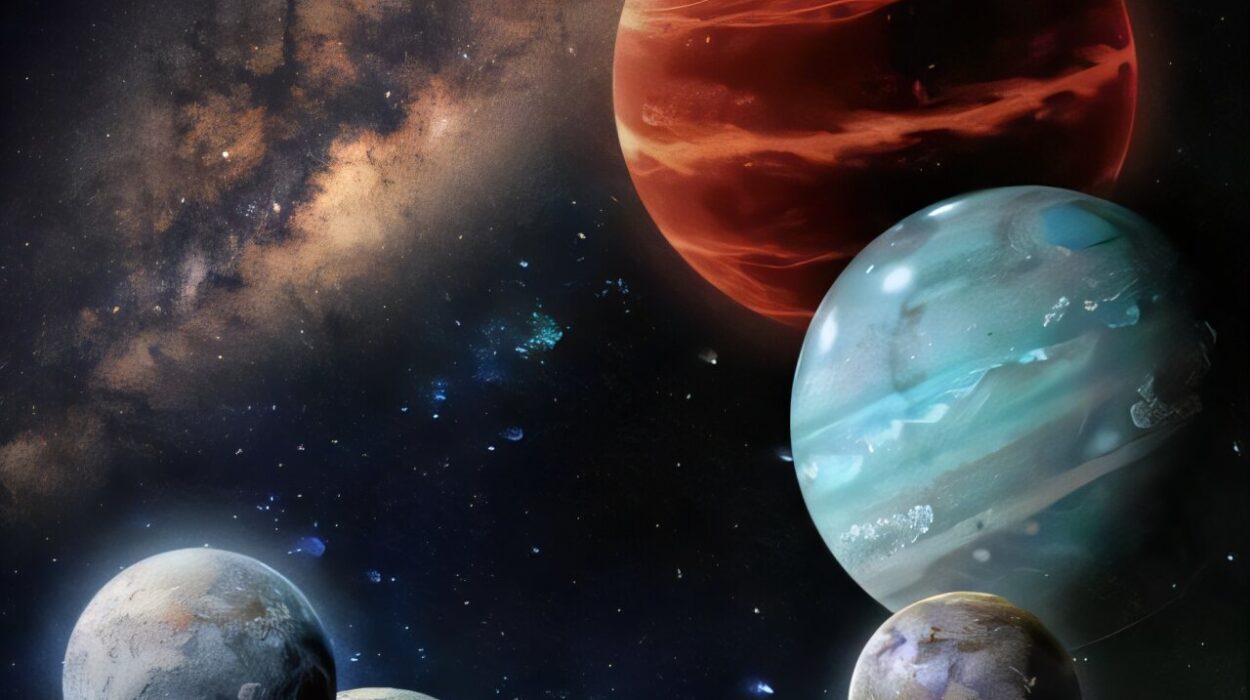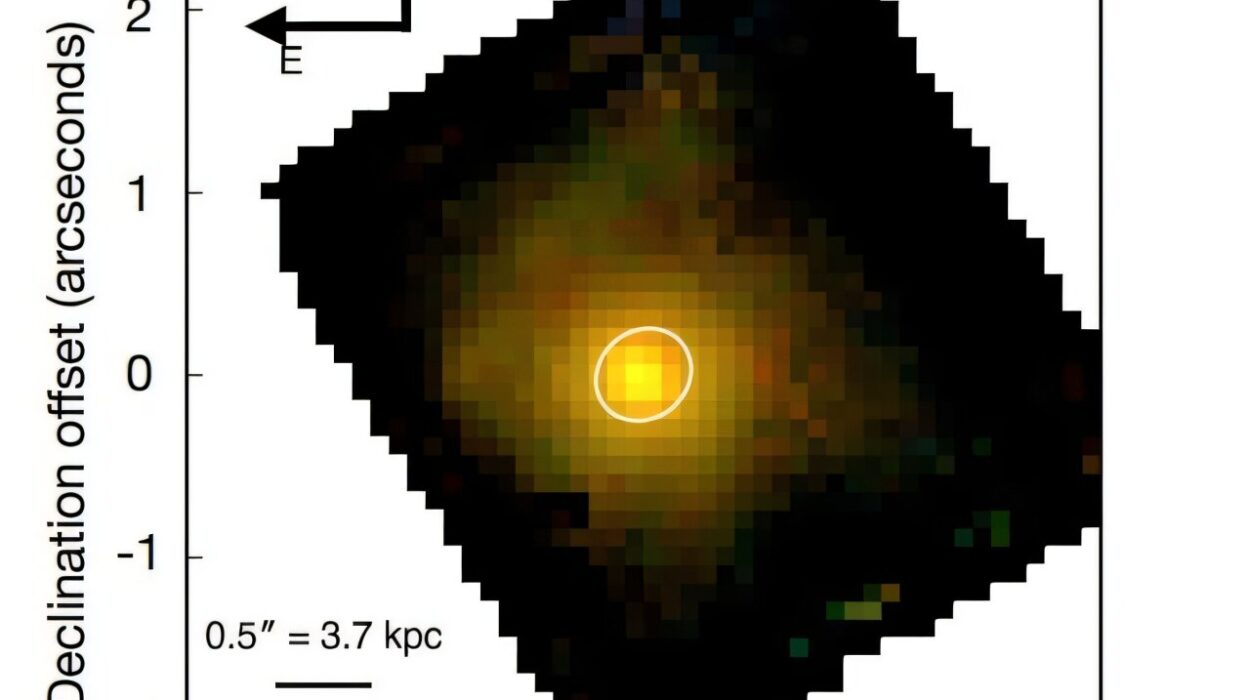In the vast, silent darkness between stars, a new kind of world is stirring the imagination of scientists—Hycean planets, immense water-covered worlds swathed in thick hydrogen atmospheres. They are still only candidates, waiting to be confirmed, but they may one day rewrite what we believe about life’s place in the cosmos.
Now, new research has added a crucial piece to their puzzle. In a paper titled “Tides Tighten the Hycean Habitable Zone”, accepted for publication in The Astrophysical Journal and currently available on the arXiv preprint server, astronomers propose that tidal heating—the internal warming generated by gravitational stretching—may be a powerful force in defining whether these planets can harbor life.
Led by Joseph Livesey of the Department of Astronomy and the Wisconsin Center for Origins Research at the University of Wisconsin–Madison, the team presents a vivid new picture of how tidal forces, not just starlight, can shape the habitability of alien oceans orbiting red dwarf stars.
A Different Kind of Habitable World
Hycean worlds are unlike anything in our solar system. Though somewhat comparable to sub-Neptunes, these planetary enigmas are believed to be blanketed in deep global oceans and surrounded by dense hydrogen-rich atmospheres. They would be strikingly alien—a horizonless sea under an atmosphere denser than Jupiter’s outer layers, possibly warm, possibly dangerous, and possibly alive.
Unlike rocky planets like Earth or Mars, Hycean worlds are massive, often several times Earth’s size, and orbit close to their host stars. Most of the candidates we’ve found so far lie near red dwarfs, the most abundant type of star in the galaxy. These small, cool stars are known for their intense magnetic activity and sudden flares—potentially lethal events for any would-be biology.
But the thick hydrogen atmospheres of Hycean planets may provide a protective shield, allowing life to flourish beneath their oceans. Their global oceans and greenhouse insulation also suggest that their habitable zones could be broader than those of rocky planets—at least, that’s what earlier models proposed.
Now, Livesey and colleagues suggest there’s more to the story.
The Hidden Heat of Tidal Flexing
In the frigid outer solar system, moons like Europa and Enceladus maintain liquid oceans beneath icy crusts—not because of sunlight, but because of tidal heating. As these moons orbit giant planets like Jupiter and Saturn, they are stretched and flexed by gravity, generating internal heat.
Could a similar mechanism power life on Hycean worlds?
The new study says yes—and it may shift our understanding of where the habitable zones for these planets truly lie. If a Hycean planet has a slightly elliptical orbit (which is common, especially when nudged by a nearby giant planet), the repeated stretching and squeezing of its interior can generate enormous amounts of heat.
This internal warmth could push the inner edge of a planet’s habitable zone farther from the star, altering previous estimates based solely on stellar radiation. The researchers call this new boundary the Hycean Habitable Zone (HHZ)—and they argue that it must take tidal effects into account.
Not Just Starlight—A Symphony of Forces
“Many studies have parameterized the habitable zone for terrestrial exoplanets,” the researchers write, “but Hycean worlds are oddballs.”
Indeed, Hycean candidates orbiting red dwarfs don’t follow the same rules as rocky worlds like Earth. Their large masses, hydrogen envelopes, and water layers respond differently to heat—and now, it seems, to gravity as well.
By modeling planetary systems with giant outer companions—a common feature in red dwarf systems—the team found that tidal heating on inner Hycean worlds can become a dominant factor in their energy balance. These gravitational interactions continuously pump heat into the planet, warming it from within even if it lies at the fringe of its star’s warmth.
The models revealed that in the presence of moderate orbital eccentricity, tidal forces can narrow and shift the Hycean habitable zone outward. Planets that might once have been considered too close to their stars—and thus too hot due to runaway greenhouse effects—could, in fact, fall within a revised HHZ because of efficient cooling or redistribution of energy. Conversely, planets previously thought to be within the safe zone might be too hot due to both stellar and tidal heating.
Not All Stars Are Equal
The study also finds that the mass of the host star significantly affects how much tidal heating matters. Around low-mass red dwarfs, tidal effects are more pronounced. But around more massive stars, the effect diminishes. That means the relationship between star, orbit, and planetary companions plays a crucial role in determining a Hycean world’s habitability.
Interestingly, about 10–20% of M dwarf systems are believed to have outer planetary companions in the 10–100 Earth mass range—exactly the kind of setup needed to produce the orbital eccentricities that generate tidal heating. If confirmed, this would mean that a significant number of Hycean planets could be experiencing this tidal boost to habitability.
A World on the Brink of Discovery
Though no Hycean world has been confirmed yet, K2-18b is the most tantalizing candidate to date. It has become a poster child for this new class of planets, especially after astronomers detected signs of water vapor, then carbon dioxide and methane, and most provocatively, a potential biosignature gas—dimethyl sulfide (DMS)—in its atmosphere.
On Earth, the only known natural source of DMS is phytoplankton, microscopic marine organisms. Its presence, if confirmed, would be among the strongest chemical hints of alien life we’ve ever seen.
The researchers in the new study reference this excitement. They propose that Hycean worlds with deep oceans could experience significant oceanic tides, not just atmospheric or interior ones. On Earth, tides are dissipated in shallow basins and coastlines. But on a planet that’s one vast ocean, the tidal energy might be efficiently captured and converted, possibly becoming a major energy source for any native life.
“We suggest, therefore,” the authors write, “that strong tides on Hycean planets could yield a significant power source for life and ultimately accelerate biological evolution.”
Rewriting the Rules of Habitability
The implications of this work ripple outward—much like the tides it describes.
Until now, the search for life beyond Earth has focused largely on rocky planets in the traditional habitable zone, defined by how far a planet must be from its star to maintain liquid water on its surface. But this new research suggests that habitability is not just about distance—it’s about dynamics.
By factoring in tidal heating, scientists can redefine the boundaries of life-friendly real estate in the galaxy. The HHZ, informed by internal heating, orbital eccentricity, and the presence of planetary siblings, becomes a three-dimensional, time-varying concept, not a fixed band around a star.
The Future of the Search for Life
The study couldn’t come at a better time. With the James Webb Space Telescope (JWST) already targeting Hycean candidates like K2-18b, and more powerful observatories on the horizon, astronomers are entering a new era where the atmospheres of ocean worlds can be probed directly.
Hycean planets are compelling for practical reasons too. Their extended hydrogen atmospheres are easier to observe than thin, rocky atmospheres like Earth’s. If life exists on these worlds, we may spot it not through landers or rovers, but through telescopic eyes fixed light-years away.
Whether they are cradles of life or barren alien oceans, Hycean planets are reshaping our understanding of where life might arise. The tides may be whispering secrets of life in the universe—not in Earth-like landscapes, but beneath alien waves, in the push and pull of cosmic rhythms.
Reference: Joseph R. Livesey et al, Tides Tighten the Hycean Habitable Zone, arXiv (2025). DOI: 10.48550/arxiv.2506.12651
